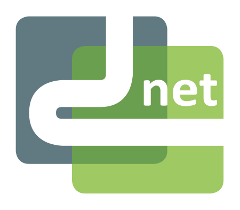
General Concepts
- Aggregative Data Infrastructures D-NET offers a kit of services for the construction of Aggregative Data Infrastructures, intended as software systems capable of collecting digital content (metadata or digital objects) from a "federation" of data sources to process them and provide them to end-users or third-party systems. To this aim, D-NET services are organized in five main areas: Data Mediation, Data Mapping, Data Storage and Indexing, Data Curation and Enrichment, and Data Provision.
- Services-Oriented Architecture (SOA) D-NET enables a run-time Service-Oriented framework, where applications consist of a set of services, possibly but not necessarily running at different network nodes, which interact to deliver the functionalities expected by users. The application framework is operated by a special kit of core services, namely the D-NET Enabling Area, supporting registration/de-registration, orchestration and secure access of services participating to the infrastructure.
- Service-oriented Infrastructures (SOI) D-NET marries the principles of Service-Oriented Infrastructures (SOIs). Such systems offer a run-time distributed environment where multiple organizations can dynamically deploy, share and combine their services to form applications. In particular, a D-NET installation is operated and administrated by a responsible organization (PO) and used by a number of participating organizations (POs). POs can join the infrastructure offering and sharing services or re-using services provided by other POs. The RO is responsible for admitting new POs and supporting them in the construction and configuration of their applications.
- Customizability D-NET services are general-purpose, i.e., they are designed to support general functionality patterns so that they can be easily customized and re-used to match the needs of the specific application scenario. For example, index services can be dynamically configured to be fed with of metadata records of any format.
- Openness The D-NET's framework is open to the introduction of new service typologies, i.e. new functionalities, encapsulating existing software or products.
- Autonomicity D-NET applications are formed by sets of interacting services. The workflows ruling such services can be orchestrated and monitored by the D-NET application framework, thereby easing the administrative tasks to the system administrators. For example, replicas of indices, thus synchronization between different instances, can be configured by administrators and then left under the control of the orchestration and monitoring mechanisms supplied by the system.
- Use of Standards D-NET adopts the Java Web Service framework, where services exchange data through SOAP envelopes or via equivalent REST APIs (when performance and/or bandwidth becomes an issue). XML is the lingua-franca for the whole system. Security mechanisms are provided according to the Access Control Markup Language standard (XACML). OAI-PMH and SRW/CQL are supported as standard APIs to import and export content in a D-NET infrastructure. Other protocol APIs, namely OAI-ORE and ODBC, are currently under development.